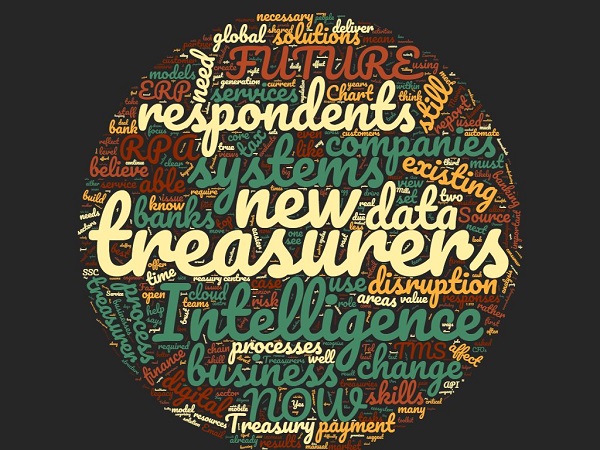As readers of this blog will know, i am interested in all things technology and payments related so the recent report The Future is Now: How Ready is Treasury? was an interesting read. The report summarises the results of a survey, of 300 senior corporate treasury folks, conducted in May-June 2018 by the Economist Intelligence Unit on behalf of Deutsche Bank. In this post, i summarise my 7 key takeaways.
1/ Treasury is changing, it is being Disrupted by Technology
I know that is stating the bleeding obvious, but sometimes you need to talk about the elephant in the room. And in the case of Treasury this is doubly important. Here’s why, and its nicely captured in the executive summary of the report:
- Treasury is all about cash and liquidity management, AP/AR oversight, funding and financial risk management
- Treasury is shifting from being a transaction and reporting hub to one of a strategic risk holder and analytics centre of expertise
- In order to move to this strategic risk holder and analytical excellence space, Treasury needs to evolve and utilise technologies such as automation tools, Artificial Intelligence (AI), Robotics, Application Programming Interfaces (APIs), cloud services…. you get the idea..!
- Disruptive innovation as a concept was conjured up over 20 years ago, the iPhone was born over 10 years ago, Facebook, Google, Amazon, Netflix, Apple are all disrupting traditional industries so you can bet your bottom dollar that Treasury will be (is being) disrupted too
2/ Treasury folks needs to learn their ABCs – Artificial intelligence, Blockchain & Cloud
Interestingly the report highlights examples of where technologies such as Artificial Intelligence (AI), Robotics, Application Programming Interfaces (APIs), cloud services and big data analytics are seen as tech-heavy issues. A lack of knowledge of these tech trends may result in a lack of interest…..
3/ Lack of Technology Knowledge is not an Excuse for Inaction
A lack of technology knowledge is not a sustainable strategy and treasurers need to partner with their banks and business functions to understand how this “new, new thing” can benefit the business and improve efficiencies.
4/ Remove the chains of Legacy Systems by hiring Tech Visionaries
Legacy systems are a particular challenge for established corporates, and one way to deal with this and ensuring the continued evolution of Treasury is through employing tech-savvy individuals to help move towards a cutting edge Treasury function.
5/ Embrace the Fintech Revolution
Fintech companies are rocking the financial services space and for Treasury this represents an opportunity in 2 ways, to:
- Replace an existing financial service/product with one provided by a Fintech company
- Partner with a bank that is collaborating with a Fintech company that is providing value added services/products
6/ Responding to Regulation
Alongside technology banks and corporates are needing to respond to regulatory changes, many of which have an immediate and direct financial and structural impact. Current hot regulatory changes include:
It is worth noting that in many cases Treasury, Technology and Regulation are now merging – a good example of this is Open Banking.
7/ “Faith in Existing Systems is Misplaced”
The Economist Intelligence Unit report concludes with the following to-do’s:
- Treasury systems need to meet the real-time and digital demands of today and the future
- Treasury must work with banks, technology partners, fintechs or develop their own in-house tech expertise
- Treasury need to recruit beyond the traditional financial skillsets and onboard digital expertise
- Treasury cannot wait for change directed by CEOs/CFOs, Treasury must learn to persuade management and drive change
- Treasury must highlight how it can help move towards a business strategy that will be fit for the future
